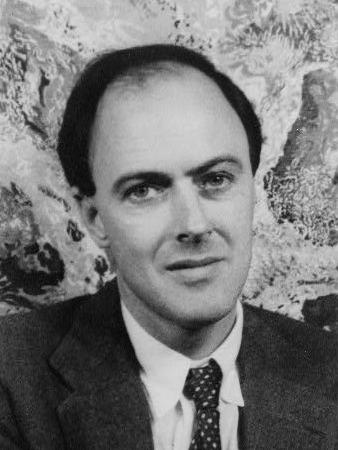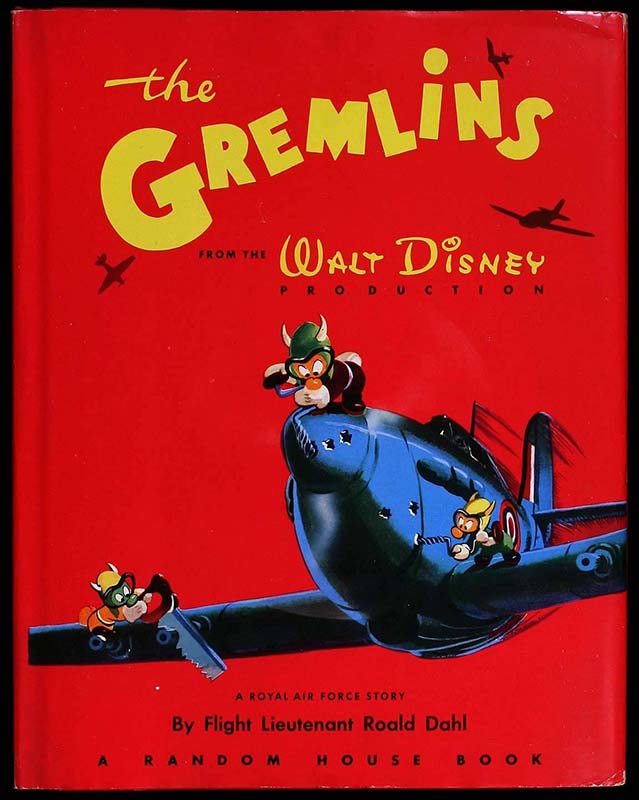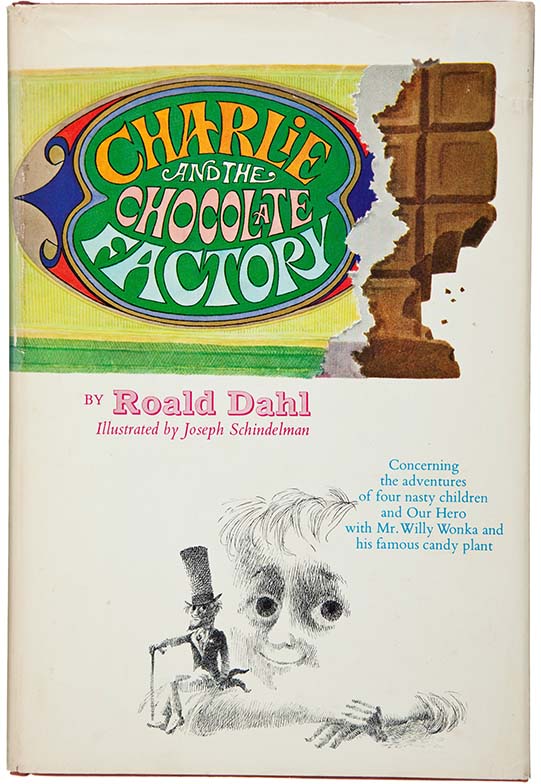Share via:
Roald Dahl – English author, 1916—1990.

English author, 1916—1990. The creator of what many claim to be the most popular children’s books of all time, Roald Dahl is a legend despite the enormous campaigns that have been mounted against him by the adult world. For children, to read one Dahl book is reason to read them all, and to read them all is reason to read them all again. Born in South Wales to Norwegian parents, Dahl’s early life was not without difficulties. When his father died of pneumonia in 192.0, the family was left with a large estate and moved to Kent, England. At age eight, Dahl was shipped off to boarding school, where he learned to cope with disciplinary procedures that bordered on the torturous. He remained there through his early teens, when he transferred to a renowned British private school. Dahl’s experiences in boarding school, summer vacations in Norway, and other anecdotes from his childhood years are the subject of his first autobiography, Boy (1984).
Dahl joined the Royal Air Force in 1939 and suffered severe injuries when his plane was shot down over Egypt. Even after his recovery, the resulting ailments plagued him for the rest of his life, necessitating numerous spinal operations as well as a hip replacement. In 1941, while still serving in World War II, he wrote his first fiction, a collection of short stories for adults based on his experiences in the air force that were published in 1946 as Over to You. Dahl and his famous wife, actress Patricia Neal, had four children. The first, Olivia, died of measles at the age of seven; their only son, Theo, developed hydrocephalus after a severe car accident but was cured several years later. The well-known couple and their various misfortunes have been the subject of much fascination and scrutiny, and in 1969 a biography, Pat and Roald, was published and later made into a TV movie.

Dahl’s first book for children, The Gremlins, appeared in 1943 and was later purchased by Walt Disney for a feature film, which was never completed. After 1943 Dahl penned numerous other children’s favorites, creating for himself a reputation rivaled by none. These books include James and the Giant Peach (1961), Charlie and the Chocolate Factory (1964), Danny: The Champion of the World (1975), The BFG (1982), and The Witches (1983). Most of Dahl’s stories revolve around a strict portrayal of good versus evil, and the child who embodies good is always triumphant. Evil, whether it is represented by landowners, witches, giants, or nasty children, is always severely done away with in the end by a means appropriate to the character involved, evoking a bizarre and often gruesome sense of justice that empowers the child hero and, in turn, the child reader.
The reasons for children’s attraction to Dahl’s books can also be found in the author’s horrific descriptions of evildoers: the Twits, possibly the most disgusting couple in all of children’s books (The Twits, 1980); the colossal creatures wreaking havoc in The BFG; and Dahl’s version of witches, who appear to be ordinary people until they reveal their toeless feet, bald pimpled heads, teeth stained by blue saliva, and hideously long claws (all hidden by high-heeled shoes, wigs, dosed-lip smiles, and gloves) are just a few of his fanciful freaks whose attempts to rid the world of goodness are repeatedly denounced and foiled.
His heroes, in turn, are generally bright, patient, selfless children who are suffocating under the misguided protection of delinquent caregivers or burdened by some Other penalty such as poverty, dyslexia, or shyness. By heroic effort, and sometimes some assistance from a sympathetic adult figure, they are destined to overcome their difficulties in a miraculous manner and to have plenty of deliciously harrowing escapes along the way. Using a remarkable skill with words, Dahl combines likable children, nasty villains, plenty of action, a large dose of nonsense, and deftly constructed plots to create one extraordinary tale after another. But not all agree that Dahl’s work merits praise. Critics, reviewers, teachers, and parents the world over have looked at the events of Dahl’s early life and labeled them the cause of the black, violent side found in nearly all his books; but, whatever the cause, this blackness is most certainly present with a vengeance.

Characterized by racial stereotyping; violent, gruesome deaths; negative portraits of parents, teachers, and other adults; extreme depictions of right and wrong; and crude and vulgar language, the books certainly provide ample material for his detractors. Roald Dahl’s Charlie and the Chocolate Factory, one of the most popular children’s books of all time, also ranks among the most controversial. The story of a young, impoverished boy whose selflessness and luck eventually wins him the coveted Willy Wonka Chocolate Factory, Charlie earned for its author a cult following among child readers as well as critical condemnation for the book’s racist overtones, age discrimination, and excessive violence.
Leading the crusade has been Eleanor Cameron, a well-known author of fantasy for children and a respected critic. In her 1972 essay “McLuhan, Youth and Literature,” Cameron lashed out against Charlie and the Chocolate Factory, calling it “one of the most tasteless books ever written for children.” Cameron’s remarks drew a flurry of outrage and united Dahl’s fans, young and old, in a war of words. Most of his books, in turn, came under similar attack, but they did not remain undefended in the realm of professional critics. Dahl has been called a literary genius; his books have been considered modern fairy tales. But whether or not adults approve of them Dahl’s fiction has found a devoted readership in children, and despite his significant contribution to adult literature (Kiss Kiss, Switch Bitch) and screenwriting (You Only Live Twice, Chitty Chitty Bang Bang), his name will be forever associated with the peaches, chocolate, and Big Friendly Giants of the children’s book world that he changed forever.
Christine C. Behr
Source: Children’s Books and their Creators, Anita Silvey.
Roald Dahl Books
- The Gremlins, 1943, Random House, New York
- Sometime Never: A Fable for Supermen, 1948, Charles Scribner’s Sons, New York
- James and the Giant Peach, 1961, Alfred A. Knopf, New York
- Charlie and the Chocolate Factory, 1964, Alfred A. Knopf, New York
- The Magic Finger, 1966, Harper & Row, New York
- Fantastic Mr Fox, 1970, Alfred A. Knopf, New York
- Charlie and the Great Glass Elevator, 1972, Alfred A. Knopf, New York
- Danny, the Champion of the World, 1975, Alfred A. Knopf, New York
- The Enormous Crocodile, 1978, Alfred A. Knopf, New York
- My Uncle Oswald, 1979, Michael Joseph, London
- The Twits, 1980, Jonathan Cape, London
- George’s Marvellous Medicine, 1981, Jonathan Cape, London
- The BFG, 1982, Farrar, Straus and Giroux, New York
- The Witches, 1983, Farrar, Straus and Giroux, New York
- The Giraffe and the Pelly and Me, 1985, Farrar, Straus and Giroux, New York
- Matilda, 1988, Viking Kestrel, New York
- Esio Trot, 1990, Jonathan Cape, London
- The Vicar of Nibbleswicke, 1991, Century, London
- The Minpins, 1991, Jonathan Cape, London
